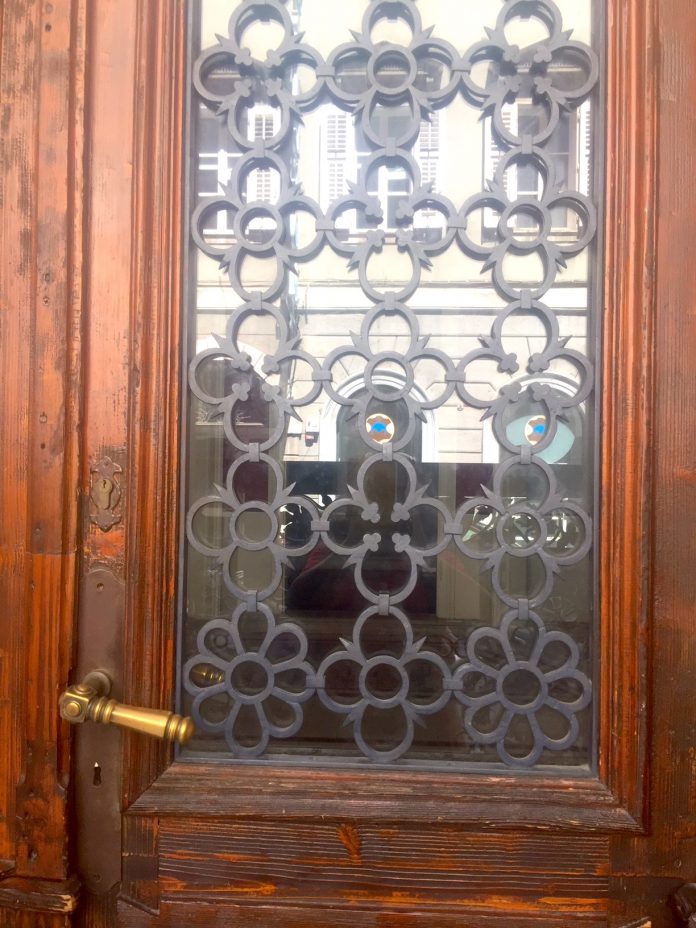by Alessandra Ressa
Did you know that the first Emergency Room in Trieste was located at the very beginning of via San Francesco?
Known as Palazzo della Croce Rossa (the Red Cross Building), it was considered one of the most modern and advanced healthcare facilities in Europe, with expert medical staff, all educated and trained in Vienna. Trieste’s ER even had the earliest ambulances!
Of course, Trieste was part of the Austrian territory then, and the Empire only wanted the best for its “pearl on the Adriatic”. Today, after decades of abandonment, the building has been converted into private apartments and once again stands in all its architectural beauty in via San Francesco n. 3.

It all began in 1881, when a fire broke out at the Ringtheater in Vienna. Hundreds of people died and many more were severely wounded. The Austro-Hungarian Empire realized then that Vienna, as well as Trieste, lacked an efficient Emergency Room. In addition, hospitals were highy disorganized. Austrian philantropist and benefactor Baron Mundy immediately put himself to work and founded the Volunteering Rescue Society.
The first non-stop medical assistance service in Trieste headed by Doctor Davide D’Osmo began to operate in 1890. Following yet another cholera epidemic in town, this early Emergency Room offered medical assistance 24 hours a day, and had an ambulance service carried out by volunteering medical staff, which transported the sick to hospital with horse drawn carriages.

ER’s headquarters changed a few times as the service began to expand. Money came in from donations (the wealthiest families in town greatly contributed to the enterprise) while Baron Mundy sent the latest medical equipment available from Vienna.
As demand and services grew, a bigger, more dignified structure became necessary. In 1899 the early first-aid station moved to via San Francesco 3 to become an organized Emergency Room, with specialized medical offices to handle all types of emergencies. Meanwhile, healthcare in Trieste changed dramatically, and even the poorest were granted immediate assistance and treatment.
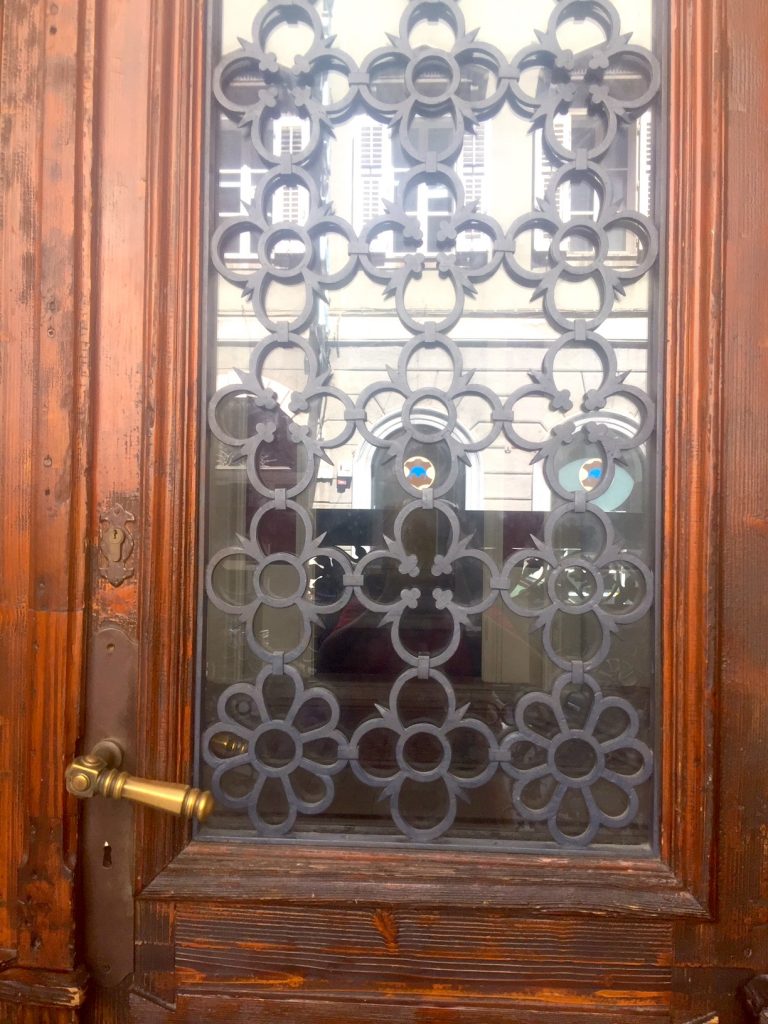
The building, with its elegant Florentine-Medieval style, was designed by the popular Trieste architect Enrico Nordio. With its nearly 1,400 square meters distributed on four floors, it had three entrance doors along via San Francesco.
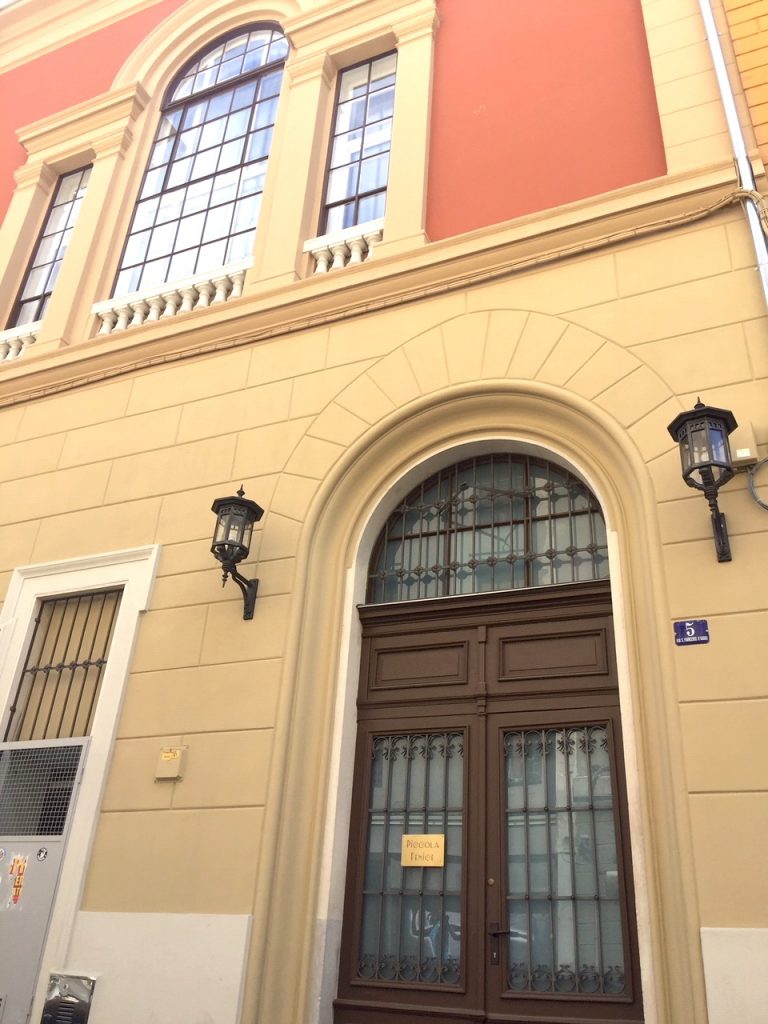
The expensive wooden floors alternated with beautiful tiled floors are still visible today. The main entrance was quite a sight, with its carved wooden door and oil lanterns on both sides. It was the perfect place for the new first-aid station.
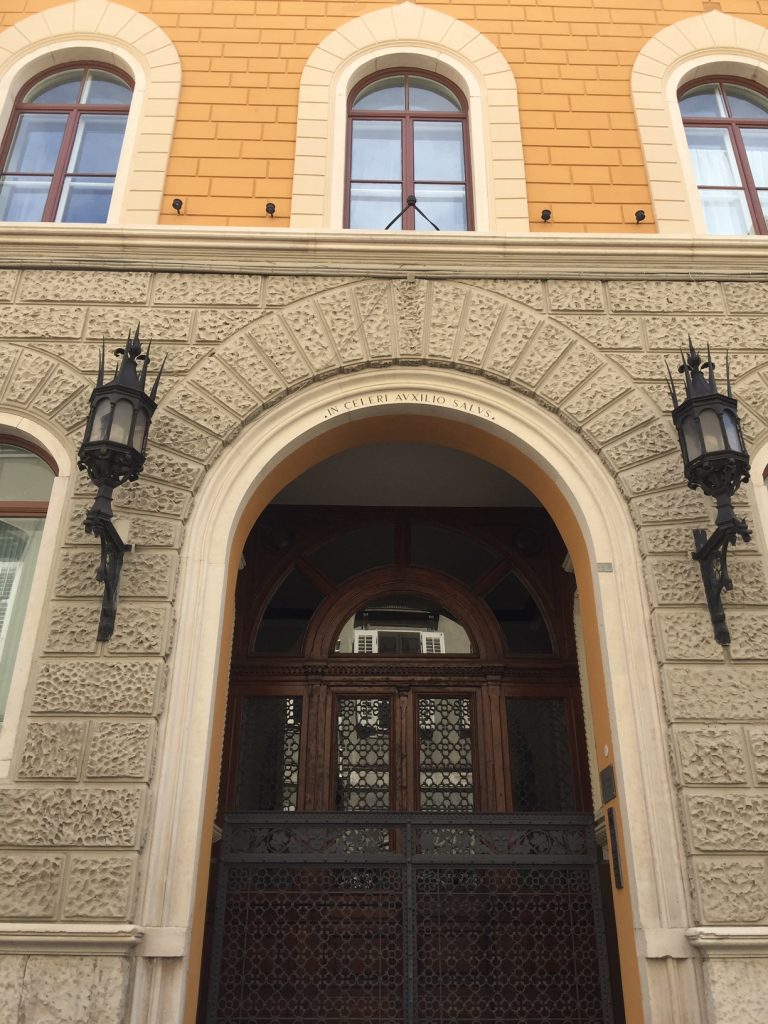
By 1905 the emergency room in via San Francesco was assisting 25,000 patients a year. It had 12 different examination rooms and as many offices. By 1906, along with the traditional horse carriages and stretchers in the big courtyard, two modern engine driven ambulances were used.
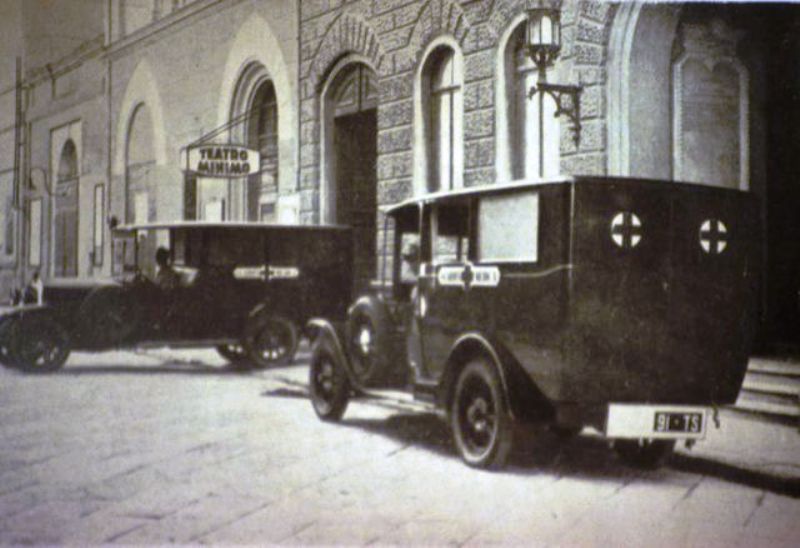
As the activity continued to expand, in 1925 the most prominent doctors of the time founded the Policlinico Triestino society (known today as SALUS).
In the early 1930s the Italian Red Cross bought the building and replaced the Emergency Room service. It became a treatment center for specific chronic pathologies.
In the 1980s its activities began to decline or were moved elsewhere, and by 1988 the building was abandoned. For almost 30 years it remained in a sorrowful state and was frequented only by pigeons and rats. The barely readable sign on the wall reminded passers-by of its past glory.
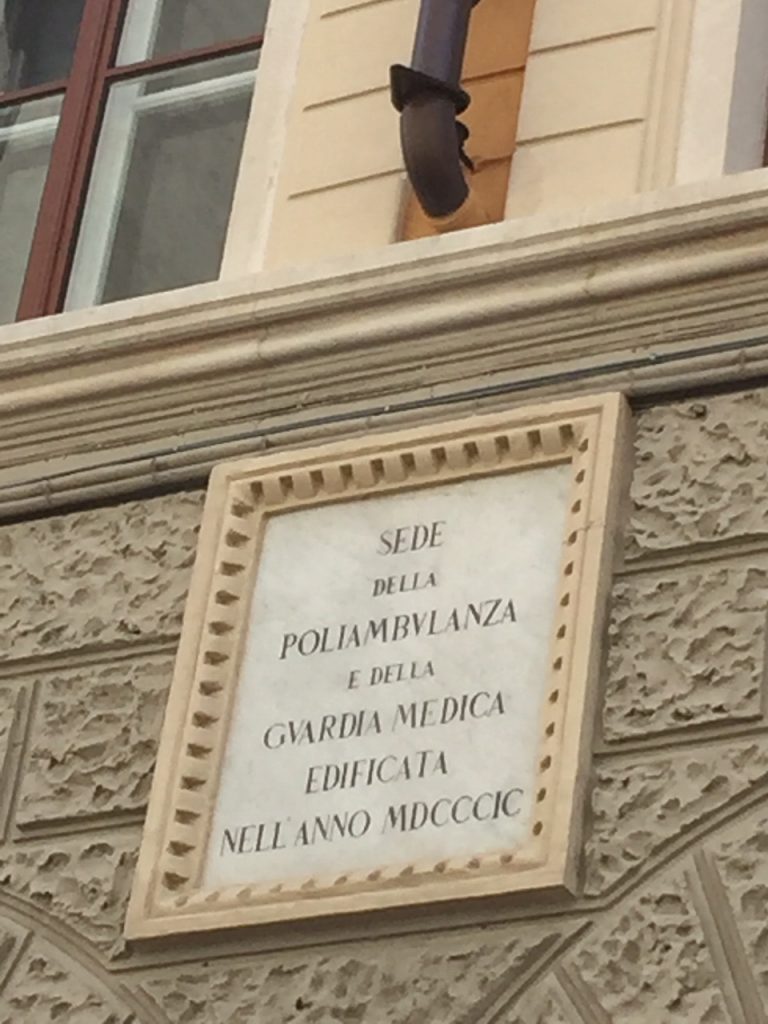
For years auctions went desert. In 2014 a construction company finally bought the building, renovated it and in 2018 converted it into private apartments. Although it is now private property, during the day the beautiful cast iron gate is open and you can peek through the wooden door at the main entrance, with its beautiful tiled floors and elegant finishes.
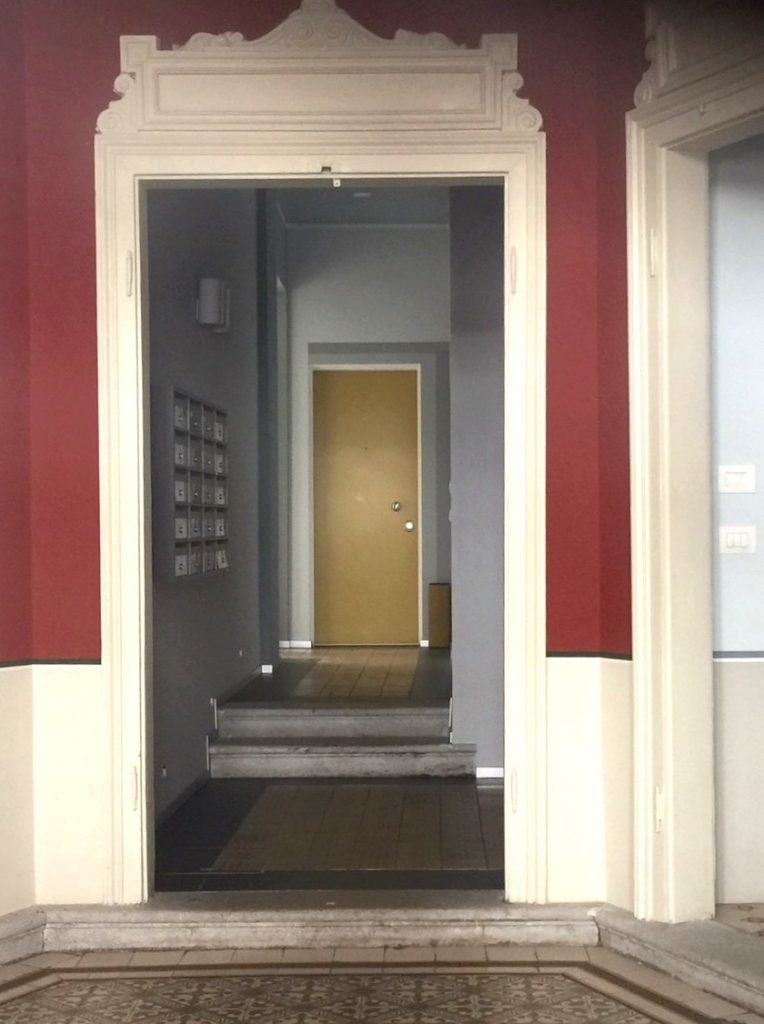
Take time to read the marble boards on both sides listing the names of the families whose generous contributions allowed Trieste’s health system to improve so dramatically.
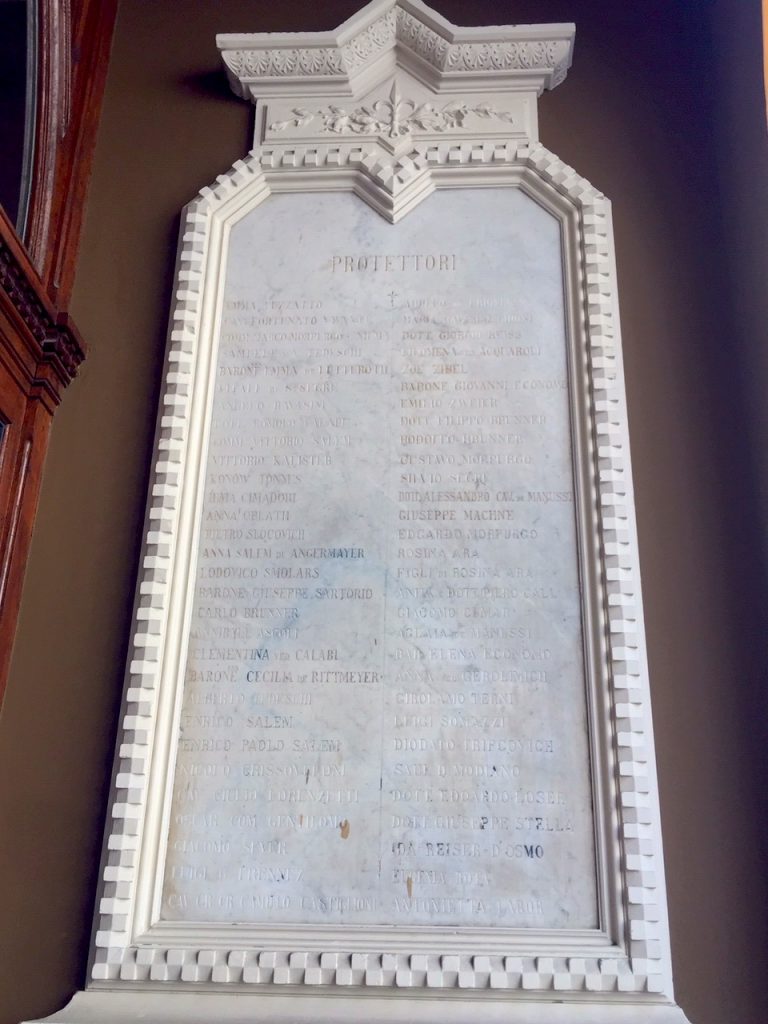
Interestingly enough, many of those families belonged to the prominent Jewish community of Trieste. Those same families were persecuted by the fascist regime only a few years after the Italian Red Cross took over the structure.

























